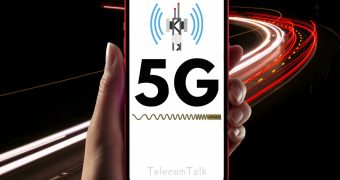
FM Radio broadcasting today is the most popular and pervasive medium to provide entertainment, information, and education to the masses. Radio remains an integral part of India's rich cultural, social, and economic landscape. Radio broadcasting is one of the most popular and affordable means of mass communication, according to the Telecom Regulatory Authority of India (TRAI), under the Ministry of Communications. So, if you wonder how many radio stations exist today, whether people are still listening to FM Radio, and what has happened to the ecosystem, this story from TelecomTalk is for you to read and understand for yourself.
Also Read: 388 Private FM Radio Stations Operational Across 113 Cities: TRAI
FM Radio in India
Just recently, TRAI released its annual report, and we have pulled the numbers for your ease. As of 31st March 2024, as per the reporting done by private FM radio broadcasters to TRAI, 388 FM radio stations have been made operational in 113 cities by 36 private FM broadcasters, besides the radio channels operated by the public service broadcaster—All India Radio (AIR). AIR provides radio broadcasting services in Medium Wave (MW), Short Wave (SW), and FM bands.
TRAI says that the introduction of private FM broadcasters in the radio broadcasting sector has significantly enhanced radio coverage while providing good quality reception and content to listeners. This has also led to the encouragement of local talent as well as enhanced employment opportunities in these areas.
The reported advertisement revenue by the private FM radio broadcasters has increased from Rs 1,547.13 crore in 2022–23 to Rs 1,775.79 crore in 2023–24, according to TRAI. However, if you look at the reality and the ecosystem, the FM Radio feature is silently being disabled from smartphones or not even enabled by handset vendors. Before we discuss more on this aspect, let's go back to the radio times and recollect some past memories!
The Nostalgia of Radio
If we recollect those good old memories or nostalgic days—maybe let's go back to the 2005 days before smartphones gained traction—pocket FM/AM radios were so popular among youth and even adults. This was followed by auto scan radios, then radios with OLED screens, and then RDS support, which used to broadcast the radio station name on the screen or save the stations with respective names when an auto scan was performed. If you are curious to know what RDS is, the Radio Data System (RDS) is a communications protocol standard for embedding small amounts of digital information in conventional FM radio broadcasts.
Those days, even basic phones and Symbian devices used to come with FM Radio with RDS support. This was later advanced with Internet Radio, which is a different case and not in the context of the current discussion.

Even today, if you visit some places, you can see people listening to the radio, especially in hotels and cafes where people meet. The FM radio placed in one corner keeps playing songs, with a nice, lively voice updating listeners about city events, traffic, and more, with some shows allowing listeners to call in and request a song. If you are from that generation, you must be totally aware of the experience.
Speaking about our experience, back in the 2006 days, we still remember those early morning 5 AM and late-night 11 PM radio shows and the listening habit while doing some redundant tasks. Even a basic Rs 1,000 phone used to come with FM Radio, which worked using wired headphones as the antenna.
Where Is FM on Today's Smartphones?
Cut to the present day—even mid to premium segment smartphones priced at Rs 1 lakh and above don't come with the FM Radio feature enabled. What's surprising is that handset makers are able to infuse devices with on-device or on-the-edge Artificial Intelligence (AI) technology, but not a simple AM/FM radio feature. Haven't you found it surprising or suspicious at any point? Even the recently launched Motorola AI-powered Edge 60 Fusion 5G smartphone doesn't come with the FM Radio feature, as per the company's official release.
We quickly checked with a few users who are using decent devices to see if their handsets support the FM radio feature. Neither Apple, OnePlus, nor Google Pixel supported AM/FM radio. In fact, if you look back, TRAI in its recommendations on "Issues related to FM Radio Broadcasting" dated September 5, 2023, had already considered the issue regarding the availability of FM radio receivers in mobile handsets.
TRAI's Recommendations: Protecting FM's Place
In this regard, after considering all aspects received from stakeholders, TRAI recommended two important features, which concern the end user. These include allowing private FM radio operators to broadcast news and current affairs programs, limited to 10 minutes in each clock hour. "The program code of conduct as applicable to All India Radio for news content may also be applied to private FM radio channels," TRAI said in its recommendation.
The second aspect TRAI highlighted is: "Functions or features pertaining to FM radio should remain enabled and activated on all mobile handsets having the necessary hardware. The built-in FM radio receiver in a mobile handset must not be subjected to any form of disablement or deactivation."
TRAI also said, An online grievance redressal portal should be provided for submitting information or complaints in case of any non-compliance regarding the enablement of FM radio functionality in such mobile handsets that have the necessary functionality for FM receivers.
TRAI, on February 21, 2025, released recommendations on the ‘Framework for Service Authorisations for Provision of Broadcasting Services under the Telecommunications Act, 2023', which also includes IPTV, FM Radio, and Community Radio Stations (CRS).
Industry Reactions: Unmet Needs
According to an exchange4media report dated March 6, 2025, TRAI's latest recommendations regarding the creation of a framework for service authorisations in the broadcasting sector have sparked mixed reactions in the radio industry.
"Although the recommendations, introduced under the Telecommunications Act, 2023, outline a new regulatory framework set to shape the future of radio and broadcasting in India, they overlook a critical aspect: the incorporation of FM radios into mobile handsets, experts noted. This proposal, previously floated by the Ministry of Information and Broadcasting, is yet to materialise," the report said.
Considering India's 650 million smartphone users, such a move could have significantly boosted the radio industry's reach, fostering stronger connections with Gen Z and tapping into a vast, digitally savvy audience, said experts, as per the report.
"The recommendations do not address the discussion on enabling FM radio on mobile phones. In today's digital era, where mobile devices dominate content consumption, radio must be seamlessly integrated into mobile handsets without being restricted to internet streaming," Nisha Narayanan, COO and Director of Red FM and Magic FM, was quoted as saying in the report.
Also Read: Government Advises Mobile Phone Manufacturers to Enable FM Radio Feature
FM Matters in Emergencies and Rural India
FM radio has the potential to reach the last mile, she noted, as per the report. "It functions flawlessly during emergencies, public safety situations, and moments of national significance that require immediate reporting, precisely because of its live and 24x7 nature. Ensuring its availability on mobile devices is crucial to maintaining FM radio as an accessible and relevant medium for the masses."
Speaking from a community radio perspective, Archana Kapoor, founder of Radio Mewat (a community radio operating in Nuh, Haryana), reportedly said, "The decision seems to be influenced by the interests of various stakeholders, including broadcasters, telecom operators, and device manufacturers, who benefit from data-driven digital media consumption rather than allowing free, offline access to FM radio."
Reportedly, she further asserted that in situations of internet shutdowns, natural disasters, or power outages, FM radio remains the most reliable and accessible medium for real-time information, especially in rural and disaster-prone areas. "In our country, with a vast rural and economically disadvantaged population that still relies on radio or inexpensive tools for information, education, and entertainment in their own dialects, not mandating FM chips in mobile phones could further exclude these communities."
On the aspect of permitting private FM stations to air news and current affairs for up to 10 minutes per hour and provide live coverage of national sports events, the industry welcomed the move.
Narayanan reportedly highlighted that, "For years, private FM radio was the only medium restricted from airing news, current affairs, and live sports while television, digital, and even international radio channels operated without such limitations. This long-overdue change has the potential to reshape FM radio's role in the media ecosystem. Expanding content offerings will enhance listener engagement and unlock new revenue streams by attracting advertisers from previously untapped categories, thereby strengthening the industry's overall ad pie."
According to the report, PMAR 2025 forecasts indicate that this 2 percent share will accelerate to 9 percent in 2025 with the help of government support and digital radios. The report stated that Indian radio stations are rapidly evolving beyond traditional FM inventory, integrating digital content to attract advertisers and expand their reach.
TRAI, in October 2024, closed a consultation paper on formulating a Digital Radio Broadcast Policy for private radio broadcasters, for which the regulator received 43 comments and 13 counter-comments.
Also Read: Private FM Radio Channels See Slight Dip in Advertisement Revenue in Q3 2024
Possible Scenario of FM Radio Today
Let's now possibly discuss some benefits of FM Radio on smartphones. Just because some users can afford internet or data-bundled plans doesn't mean everyone can. Some may afford it but may not be keen on data-oriented services. For such users, it is easier to operate and use an FM feature than use the internet or apps. Also, disabling the FM Radio feature forces people who are not interested in the internet to install apps, learn to use them, create accounts, and navigate through apps just to stay updated. Some people may not want to go through this hassle and are simply happy switching on the radio to listen to current affairs or songs, with a lively human voice. They also get to know about local events and happenings. Now that the government has enabled news to be aired by private broadcasters, people can also listen to news crafted by radio stations without any hassles.
Let's say someone opted for an internet pack and the data got exhausted before the validity expired. Disabling FM features on smartphones deprives users of information and defeats the purpose of radio for offline-based communication to the masses. With the radio feature enabled, users can simply switch it on and listen to music, local updates, or news without relying on internet services until the next recharge.
Digital Radio
Now that the Digital Radio Broadcast Policy consultations are closed, we will look forward to the recommendations and eventual transition to digital radio services in the days ahead. According to the government, AIR has initiated the digitisation of its analogue MW and SW radio broadcast network. In the first phase, AIR has replaced 38 analogue transmitters with digital transmitters.
Conclusion
If we observe the pattern of events, is it that mobile companies want to promote internet-based streaming services while cutting off offline, free infotainment and communication that can reach remote corners of the country? Handset vendors may argue that the handset lacks the required hardware or chipset. But if a consumer is interested in internet-based streaming services such as Spotify or Apple Music, they will opt for it by paying for both the subscription and data pack. There is no need to disable a basic feature. Why cut off a freely available source of entertainment and information—especially one that can serve in emergencies? It's unclear why or whose interests are being served here.
Now that we have presented government recommendations, industry perspectives, the use of radio, and factual insights, we leave it to the readers to consider why handset manufacturers are not enabling this simple radio feature in devices—and when this silent disabling of FM functionality in handsets actually began. Is it to increase internet dependency for even the basics—and to serve whose interest?
Also Read: BSNL’s Lapses Cost Govt Rs 1,757 Crore in Unbilled Charges to Reliance Jio
Also in This Series:
Internet or Cached Data: The Internet or Just Cached Data: What Are Users Actually Using?
Monetisation Saturation: Telcos Have Reached a Saturation Point with Limited Monetisation Prospects?
Spam/UCC: Spam, UCC Messages Find Their Way to Users Through RCS and OTT Apps?
Alternate Number: Is an Alternate Mobile Number a Must for Availing Services?
4G/5G Monetisation: Monetising 4G and 5G: Key Takeaways to Date and What’s Next?















